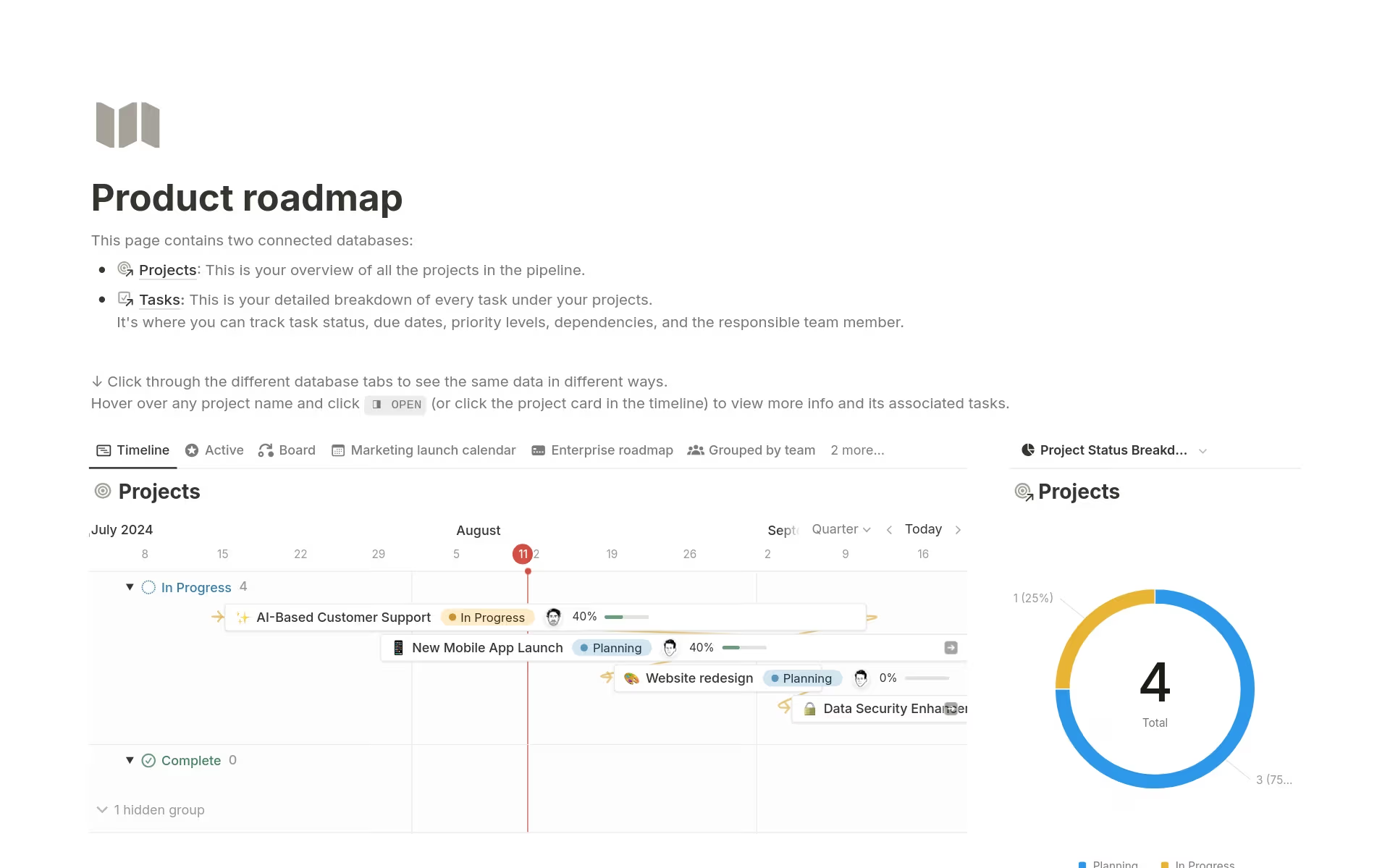Having a Product Development Path is crucial for organizing and streamlining the process of bringing new products to market. It helps teams to prioritize tasks, manage timelines, and allocate resources effectively. A Product Development Path template in Notion can provide a structured approach, ensuring that all stages of product development are accounted for and progress is easily tracked.
Before you dive into creating your own Product Development Path, take a look at these Notion templates to simplify the process and set you on the path to success.
What Should Product Development Path Templates Include?
Choosing the right Product Development Path template in Notion can streamline your project from inception to launch. Here are key components to look for in a high-quality template:
Clear Milestones: The template should outline major milestones clearly, helping teams visualize the end goals and intermediate steps necessary to reach them.
Resource Allocation: It must include sections for assigning resources like budget, manpower, and tools, ensuring that every aspect of the product development is adequately supported.
Flexibility: A good template will be adaptable to changes. It should allow for modifications as the project evolves without disrupting the overall flow.
Integration Features: Look for templates that offer seamless integration with other tools and platforms, enhancing collaboration and efficiency across departments.
With these components, a Product Development Path template not only aids in organization but also enhances strategic planning and execution.
What Should Product Development Path Templates Avoid?
Choosing the right Product Development Path template in Notion can streamline your project management and innovation processes. However, it's important to be aware of certain elements that can hinder rather than help. Here are three key components to steer clear of:
Overly Complex Structures: Templates that feature too many layers and subcategories can lead to confusion and reduce usability. Opt for simplicity to enhance team collaboration and efficiency.
Fixed, Non-Customizable Stages: Avoid templates that do not allow modifications to the development stages. Flexibility is essential as product needs can evolve during the development process.
Generic, Non-Industry-Specific Content: Templates that are not tailored to your specific industry might miss essential steps or focus areas, making them less effective.
Remember, the best templates are those that balance structure with flexibility, are easy to use, and are tailored to your specific industry needs. Choose wisely to maximize your product development success.













